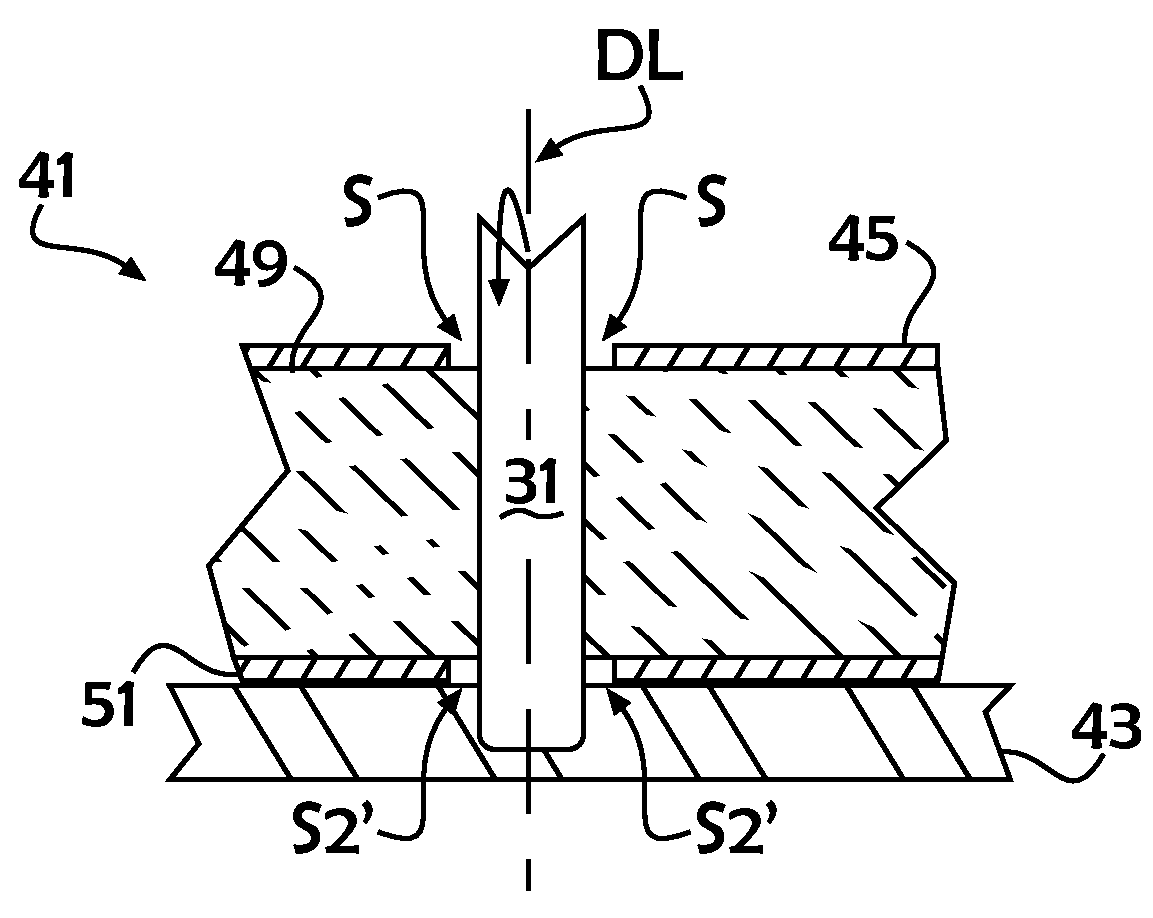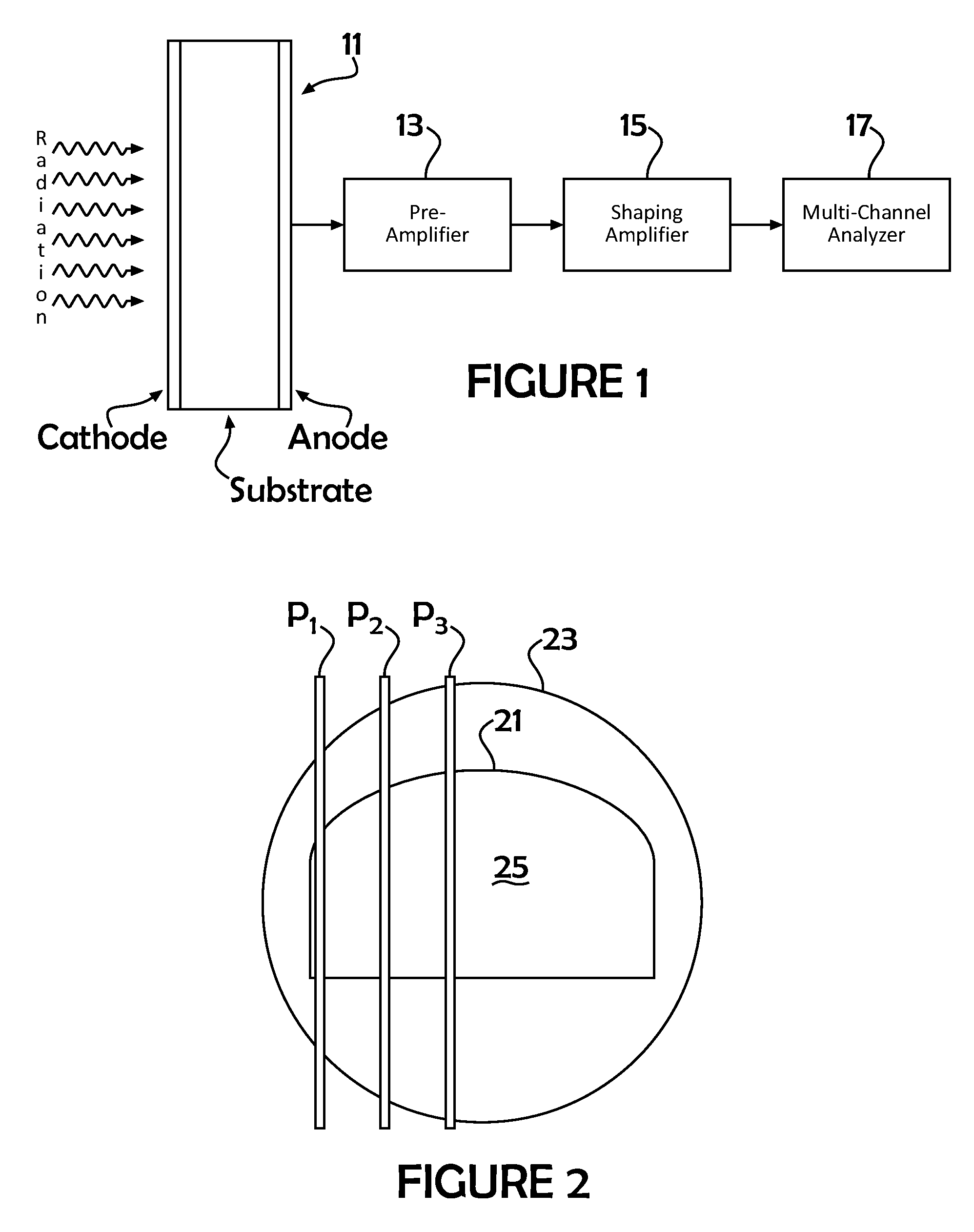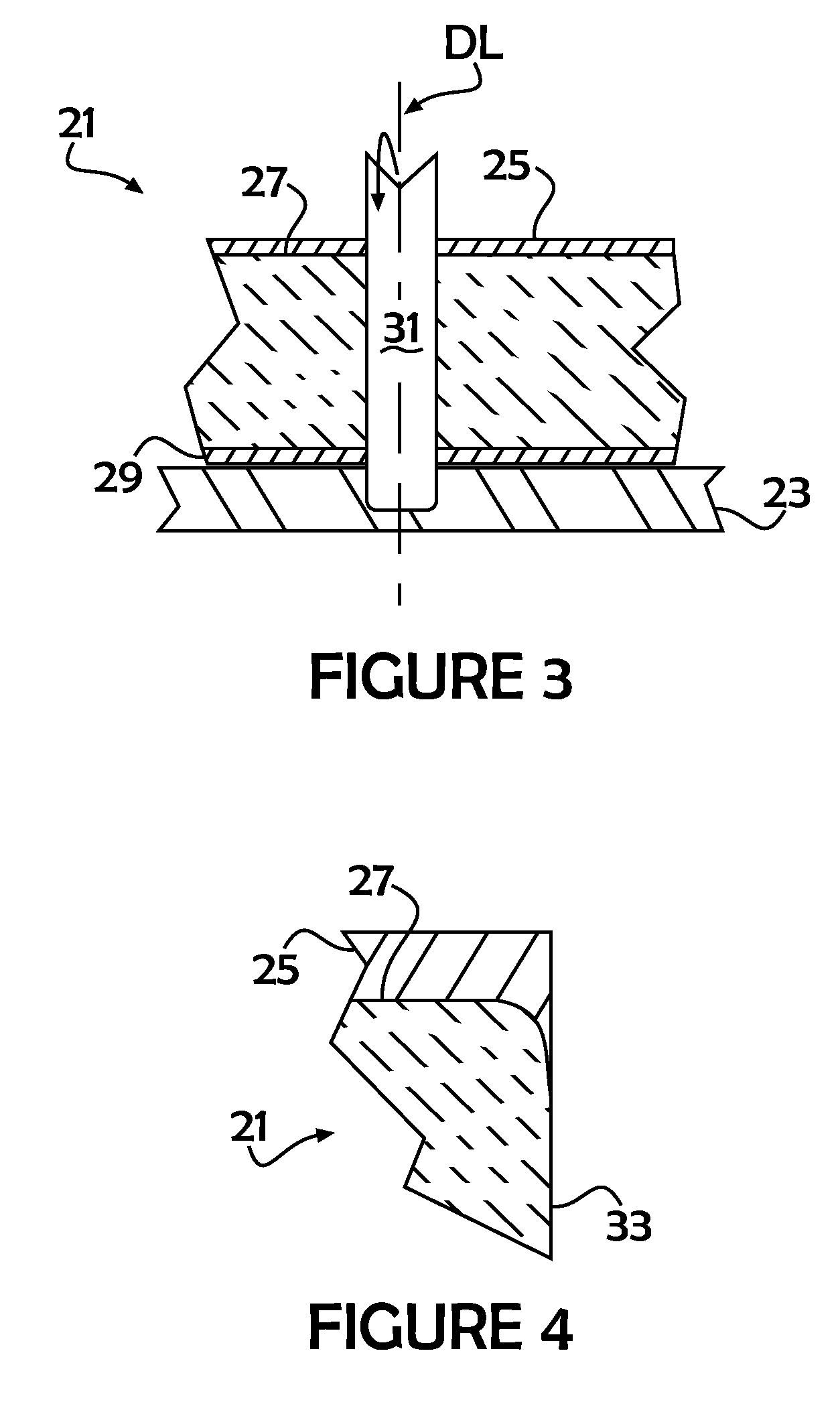Method of making a semiconductor radiation detector
a radiation detector and semiconductor technology, applied in the field can solve the problems of excessive side surface leakage current and/or noise generation, difficulty in properly controlling side wall properties, and limited fabrication of detectors with side wall extended electrodes (e.g., semi-hemispherical detectors), and achieve the effect of improving the art of semiconductor radiation detectors
- Summary
- Abstract
- Description
- Claims
- Application Information
AI Technical Summary
Benefits of technology
Problems solved by technology
Method used
Image
Examples
Embodiment Construction
[0025]For a better understanding of the present invention, together with other and further objects, advantages and capabilities thereof, reference is made to the following disclosure and appended claims in connection with the above-described drawings. It is understood that like numerals will be used to indicate like elements from drawing figure to drawing figure.
[0026]As understood from the description herein, the present invention provides a new and unique design and fabrication process to limit the potential adverse effects of post-diced side surfaces on final detector performance. The basic concept involves the recession of at least one electrode metallization layer from the semiconductor dice line to prevent direct physical contact between the dicing blade and metal. Formation of the metal layer(s) may be accomplished by slightly modified conventional means including, e.g., shadow masking (e.g., where sputtering occurs through a metal, e.g., nickel, mask), photolithographic proc...
PUM
 Login to View More
Login to View More Abstract
Description
Claims
Application Information
 Login to View More
Login to View More - R&D
- Intellectual Property
- Life Sciences
- Materials
- Tech Scout
- Unparalleled Data Quality
- Higher Quality Content
- 60% Fewer Hallucinations
Browse by: Latest US Patents, China's latest patents, Technical Efficacy Thesaurus, Application Domain, Technology Topic, Popular Technical Reports.
© 2025 PatSnap. All rights reserved.Legal|Privacy policy|Modern Slavery Act Transparency Statement|Sitemap|About US| Contact US: help@patsnap.com



